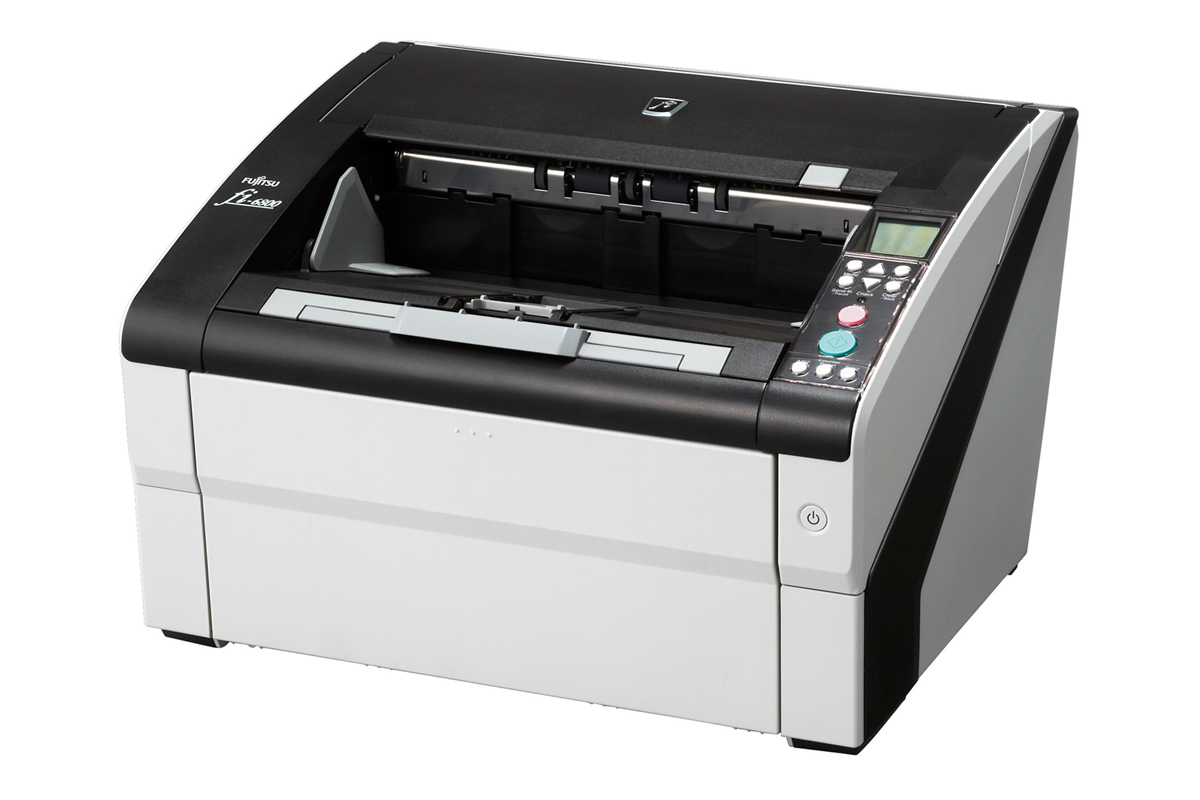Fujitsu fi-6800 review
Fujitsu's high volume, heavy duty production scanner could take care of almost all of your company's scanning needs. Simon Handby takes a closer look in our review.

With lower volume scanners such as Canon's £2,400 ImageFormula DR-6030C built to handle 10,000 operations a day, you need to be serious about scanning to justify the extra investment in such a heavy duty device. However, where there's a proven need for a robust, quick and reliable production scanner the fi-6800 is competitively priced and more than up to the job.

Fujitsu doesn't suggest a minimum specification for the host computer, so we used USB to connect the fi-6800 to a run-of-the-mill Core i3 PC running Windows 7, and conducted our tests using Fujitsu's oddly titled 'ScandAll' software. At the default 300dpi setting, scanning 100 sheets into compressed TIFF files took just 61 seconds; almost exactly the claimed speed. Repeated with a landscape orientation the same test took 53 seconds; an impressive 113ppm, but a little way short of the claimed 130ppm.
We wanted to see whether increasing the scan quality would slow things down, so we disabled hardware image compression and repeated the portrait A4 test in 24-bit colour mode. The fi-6800 shot through our stack of paper at the same rate until roughly the eightieth page, at which point it began to pause momentarily between picking sheets. On investigation we realised that the host computer was struggling to keep up with images of almost 100MB each. This aside, no options appeared to slow the fi-6800 down other than switching to the maximum 600dpi resolution, which halves its engine speed. The physical scanning of duplex jobs was every bit as fast as in simplex, although the host took a few extra seconds to finish processing the additional sides.
Sign up today and you will receive a free copy of our Future Focus 2025 report - the leading guidance on AI, cybersecurity and other IT challenges as per 700+ senior executives
After a brief career in corporate IT, Simon Handby combined his love of technology and writing when he made the move to Computer Shopper magazine. As a technology reviewer he's since tested everything from routers and switches, to smart air fryers and doorbells, and covered technology such as EVs, TVs, solar power and the singularity.
During more than 15 years as Shopper's long-time printer reviewer, Simon tried, tested and wrote up literally hundreds of home, small office and workgroup printers. He continues reviewing smart products and printers for a variety of publications, and has been an IT Pro contributor since 2010. Simon is almost never happier than when surrounded by printers and paper, applying his stopwatch and a seasoned eye to find the best performing, best value products for business users.
-
 Google DeepMind CEO Demis Hassabis thinks this one area of the tech industry is probably in an AI bubble
Google DeepMind CEO Demis Hassabis thinks this one area of the tech industry is probably in an AI bubbleNews AI startups raising huge rounds fresh out the traps are a cause for concern, according to Hassabis
By Ross Kelly Published
-
 Everything you need to know about Google and Apple’s emergency zero-day patches
Everything you need to know about Google and Apple’s emergency zero-day patchesNews A serious zero-day bug was spotted in Chrome systems that impacts Apple users too, forcing both companies to issue emergency patches
By Nicole Kobie Published
-
 Ronald Richardson to lead Leaseweb’s global commercial strategy
Ronald Richardson to lead Leaseweb’s global commercial strategyNews The experienced executive has been named Leaseweb’s new CRO as the IaaS provider embarks on the next phase of its growth journey
By Daniel Todd Published
